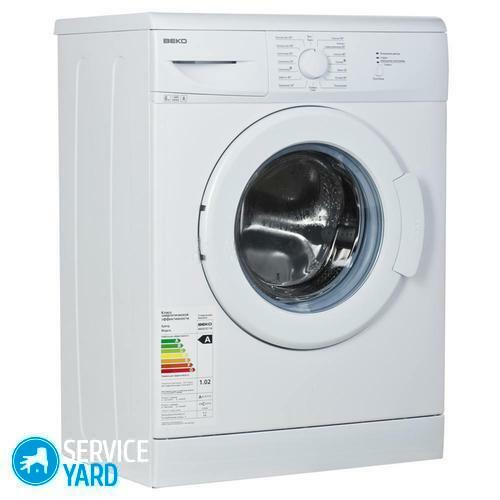Sometimes a small detail is enough to bring a touch of originality to the design of the kitchen. For example, such an accent as a bright and expressive potholder in the kitchen will surely attract the eye and delight in handmade work.
Content
- 1 Materials and tools for knitting potholders
- 2 Crochet potholders: diagrams and description
- 2.1 Flower
- 2.2 Spiral
- 2.3 Hexagon
- 2.4 Bees
- 2.5 Sunflower
- 2.6 Lamb
- 2.7 Peacock
- 2.8 Heart
- 2.9 Square potholders
- 3 Knitting potholders
- 3.1 Knitting potholders for beginners
- 4 Circle tied potholder
- 4.1 In the form of an orange
- 4.2 Potholder with a leaf, knitted from the center
- 4.3 Potholders with shadow patterns
- 4.4 Technique "enterlac"
- 5 Conclusion
- 6 VIDEO: Crocheted potholder - master class.
- 7 50 options for beautiful knitted potholders:
Materials and tools for knitting potholders
Since the purpose of the potholder is not only aesthetic beauty, but also the protection of hands from burns, the choice of materials for its manufacture should be approached in a special way.
Important! Under no circumstances choose rayon and silk yarns. They will not prevent burns.
Cotton, acrylic and wool are best suited for these purposes. But they cannot be combined, so as not to lose the shape of the product during operation.
When choosing thick yarn, you should avoid any thickening in its structure, since making patterns with such a thread will make it impossible to use it when working with hot surfaces.
Crochet potholders: diagrams and description
Flower
Choosing floristic elements and experimenting with color solutions in their design, you can always create a unique thing that harmoniously blends with the interior of the kitchen. The choice is followed by no more than two contrasting colors.
Additional Information! In order to maintain the shape and color of the product, just occasional washing in cool water is enough. Then you should starch and iron it.
- The center should start with a dark color, closing 8 air loops in a ring.
- The second row consists of 18 st. s.n.
- In the third, for 1 column of the second row, they knit and connect another loop of 23 air. Having linked further 1 Art. get 9 additional loops with 1 of the same column between them.
- The next two rows are tied with the resulting loops. The top of each loop is added with three single crochets.
- The sixth and seventh change color, but retain the previous order of work.
- In the 10th I count out 7 tbsp. bn to wrap them in a petal and connect with the eighth.

You can knit the potholder both with knitting needles and crochet. It all depends on the type of ornament and the thickness of the yarn.
Spiral
The essence of making such a tack is that several colors are used at once in a single circular row. The difficulty of such weaving is only in the fact that while one color is used, the rest of the loops remain open.
Important! To prevent loose loops from tangling and unraveling, it is worth securing them with a marker that can block them. These "markers" can be pins or paper clips.
To make a potholder, you will need 5 colors of cotton yarn, 100 g each, 4 markers and a hook number 4. The finished product will be 21 cm in diameter.
Let's take the designations for colors in advance:
A - red;
B - brick;
B - orange;
G - yellow;
D - beige.
To begin with, we make the inner ring from the darkest color - 1 air loop, 1 tbsp. bn., 1 p. s.n., 2 tbsp. s.n. Having attached a new thread, we repeat the process again with each subsequent color.
In the first row, we perform 2 tbsp for each color. s.n. from one loop and 1 tbsp. s.n. into the next loop.
In the second, we use the same number of loops, but repeat three times. Further, everything is simple - only the second article changes. s.n. - +1 more is added to it. So we do seven rows, in the last of which there will already be 2 tbsp. with n. from one loop and 6 tbsp. s.n. into the next loop three times for each color.
In the eighth in the sequence of colors D, D, C, B, A we do 3 tbsp for rounding. s.n. and 3 tbsp. bn, combining which you can cut the thread.
The product is finished after we also tie the purl and staple them to the front using color D.

Hand-made knitted items help to create special coziness.
Hexagon
This potholder is similar to homemade cookies. In its manufacture, only double crochets and air loops are used.
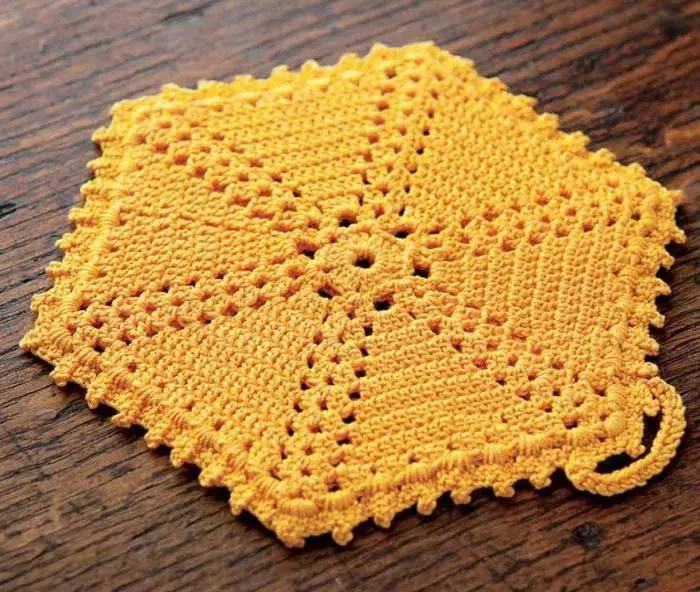
Knits according to a very simple pattern.
Bees
"Bees" in the kitchen can delight children who love to watch or help their parents in the cooking process.
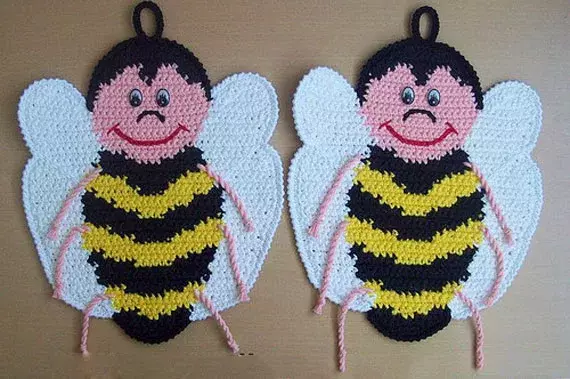
Mischievous bees will delight little children.
For manufacturing, you will need cotton yarn of black, yellow and white colors - 50 grams each. For the eyes, nose and mouth, it is worth purchasing mercerized threads in black, white and red. Hooks No. 1.5 - for threads and 3.5 - for cotton.
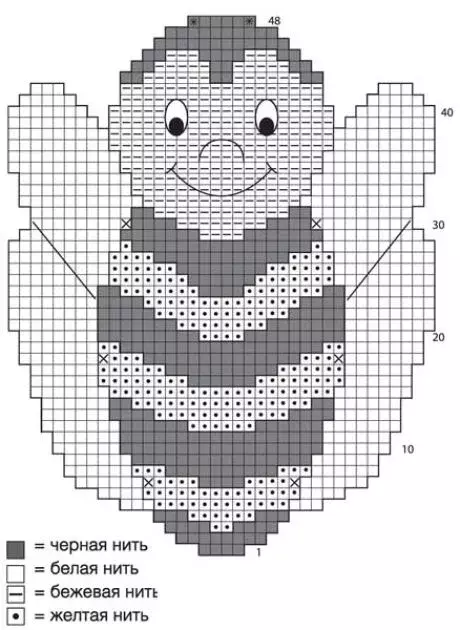
Such a tack should be knitted in accordance with the scheme.
The main pattern is performed according to the scheme, given that the decrease at the beginning of the row consists in a pass, at the end in that it is simply not knitted.
Sunflower
The scheme of this product is very similar to the scheme of the "Flower" tack.
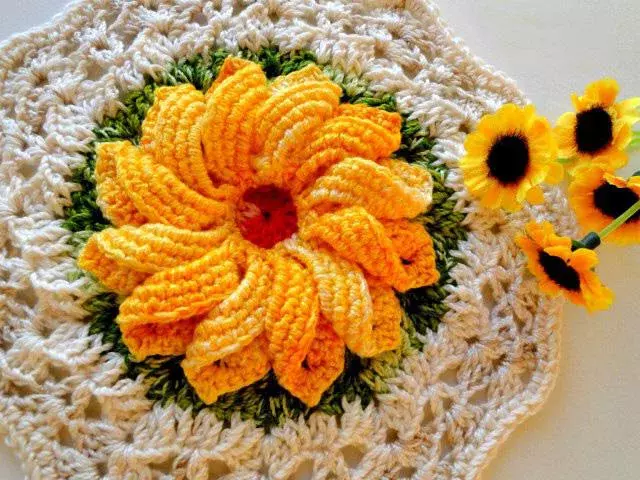
A very beautiful and easy-to-use potholder.
All the same steps are taken, starting with a flat circle. Then 12 petals are knitted, tying them with three rows of single crochet and continue according to the scheme.
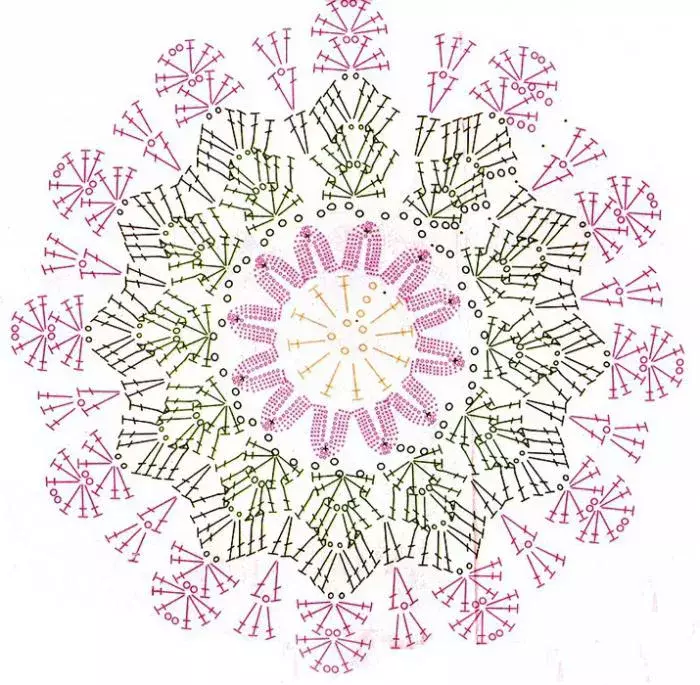
"Flower" tack pattern.
Lamb
This potholder will consist of several parts at once, which will have to be knitted in stages.
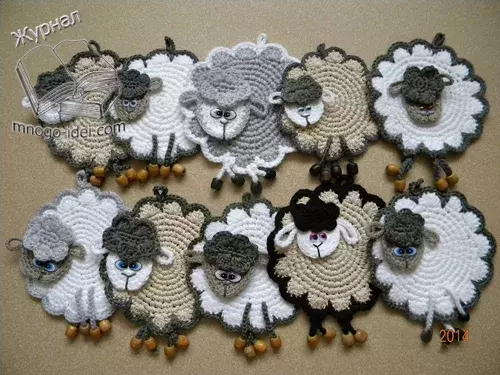
Each lamb is knitted separately.
The main part is knitted in the form of a circle, according to the scheme. The last row should be taken in a darker shade.
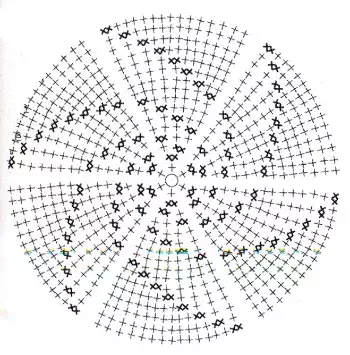
Sheep torso diagram.
Next, we knit a very simple forelock, also knitting the fabric with yarn of a darker shade.
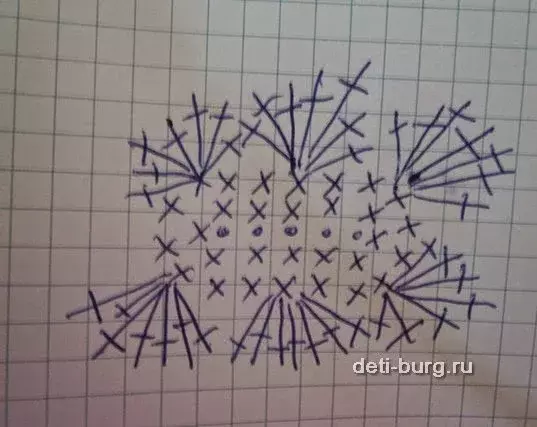
Scheme of a lamb forelock.
To make the legs, we collect white threads in 9 air loops and make 3 lifting loops. In the fifth loop, we first knit one, then 3 double crochets, 2 half-columns, 1 tbsp. bn., 3 tbsp. s.n. in one loop, 1 tbsp. bn., 2 half-columns, 4 tbsp. s.n. and 3 chain loops - close in the initial loop.
For the ears with dark yarn, we collect 8 air loops and close them in a ring. In the second loop, add 1 with a yarn over, 1 yarn over and st. b.n., 1 half-column and 3 half-columns in one loop.
We make ears and legs in pairs.
Peacock
For the first row of the base, you need to dial 2-3 air loops and close them in a circle.
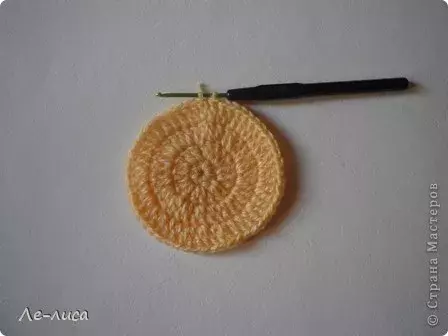
First, we take the beige threads.
In the second, we make 7 half-columns. In rows 3, 4 and 5, we make 17, 37 and 50 double crochets, respectively.
We supplement the finished part with any contrasting thread, knitting a row with single crochets. But it is important to leave 8 loops intact. (16)
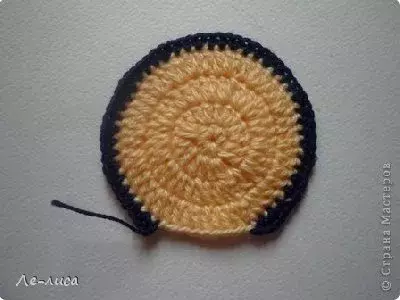
We tie it with black contrasting thread.
With the help of double crochet stitches we knit a tail. "Fans" knit 4-5 rows - no more, in each of them increasing the number of "fans". (17)
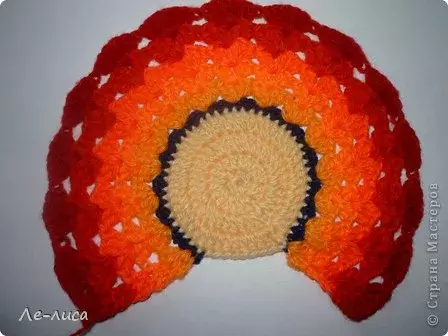
Next, we introduce a thread of orange color. And after 3 rows - burgundy.
Again using a contrasting thread, we also tie the tail. (18)
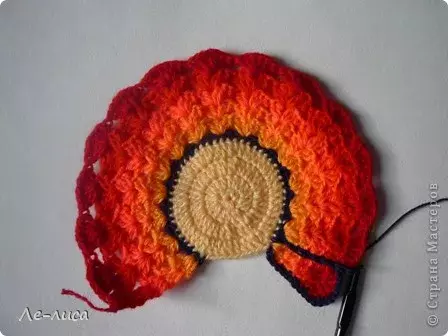
We knit the feathers on the peacock's tail with a black thread.
Do not forget to make a loop on the middle fan. (19)
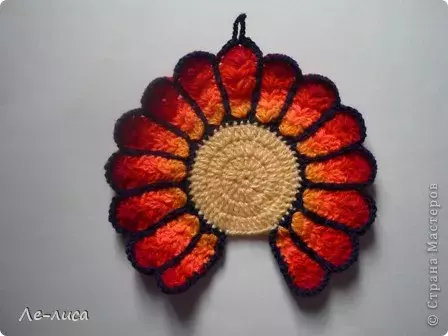
The loop is needed to hang the potholder next to the stove.
We knit the body with columns without a crochet. At the end, you need to pull the last thread so that the body rises to the tail.
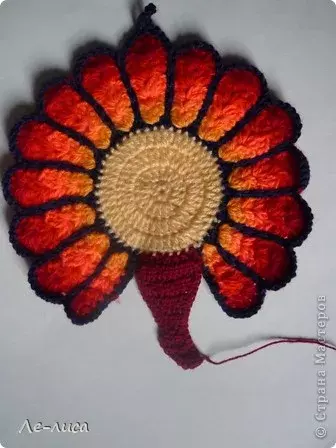
We knit the body in a dark color.
Next, we sew the eye, embroider the beak, tie up the legs and sew the head to the body. (20-21)

Here is such a handsome peacock from the remains of yarn.
Heart
This potholder will be a nice Valentine's Day gift for your mom, sister or girlfriend.
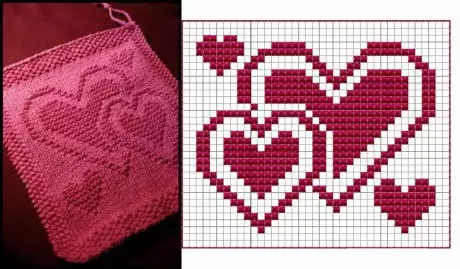
The original tack with knitting needles, knits very quickly.
Square potholders
A regular square tack is very easy to knit. You can add originality to it by experimenting with color combinations or by adding small knitted flowers to the front.
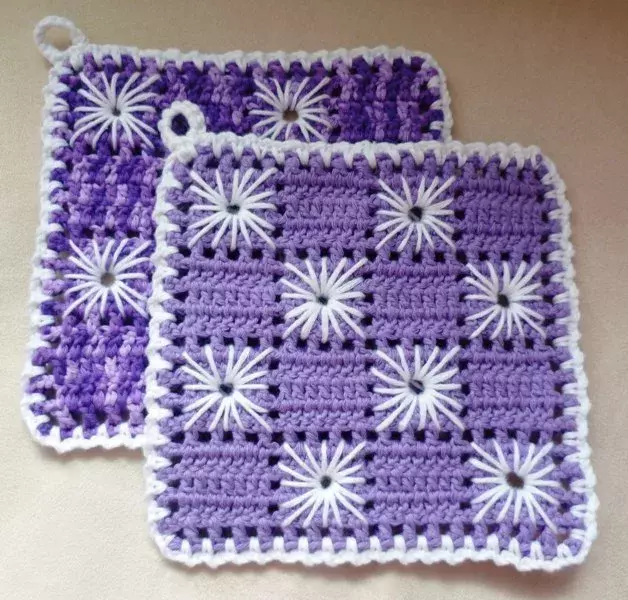
The potholder in a white-lilac color looks very nice.
Knitting potholders
The needles are chosen in the same way as the crochet - in accordance with the width of the thread. The spoke number will be its size.
You can also knit patterns or an ornament using knitting needles, but it is better to start with the simplest knitting technique - multi-colored stripes.
Knitting potholders for beginners
Additional information and tips:
- The alternation of the front and back loops allows you to achieve the volumetric pattern.
- A secret technique for novice craftsmen is embroidery. If you can't knit a beautiful ornament with knitting needles, then you can resort to embroidery over an already knitted surface.
- A little secret for determining the size of the needles: Twist the threads slightly in half - ideal needle thickness - the thickness of the twisted threads.
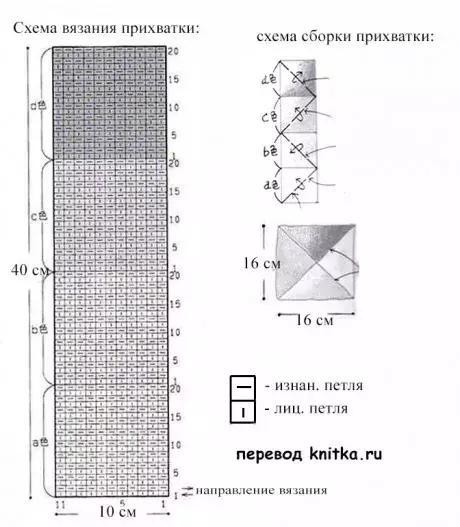
Beginners should start with simple check patterns or stripes.
To make a simple two-color tack, you need to dial 11 loops and knit 20 rows of each color alternately with the front and the wrong side. (25, 26)
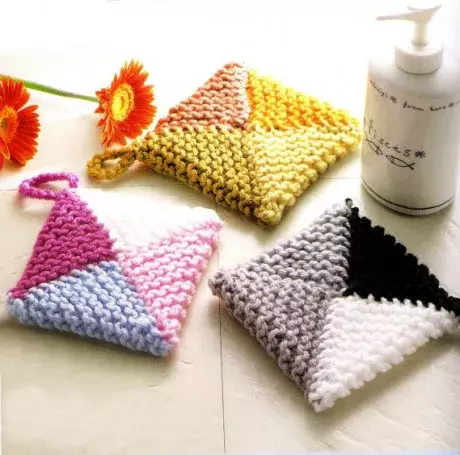
Potholders in the form of multi-colored squares.
Circle tied potholder
In the form of an orange
For such a tack, you need 50 grams of white and yellow or orange cotton yarn and a 4.5 mm knitting needle.
After each row, the knitting needles must be turned over. All loops are facial:
1 row - knit 14 loops, leaving the 15th out of work;
Knit the 2nd and all subsequent rows from the seamy side with front loops;
3, 5, 7, 9, 11 rows - decrease each time by 2 loops;
13th and 14th - knit all 15 loops.
The last 14 rows must be repeated 10 more times, and then 1-13 rows must be duplicated. Close all the loops in the purl row with a white thread.
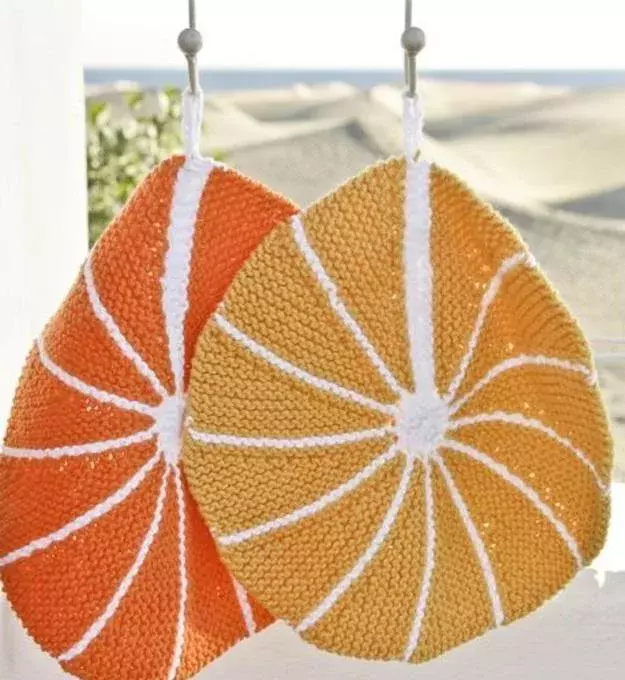
Potholders tied in short rows.
Potholder with a leaf, knitted from the center
This tack fits very simply.
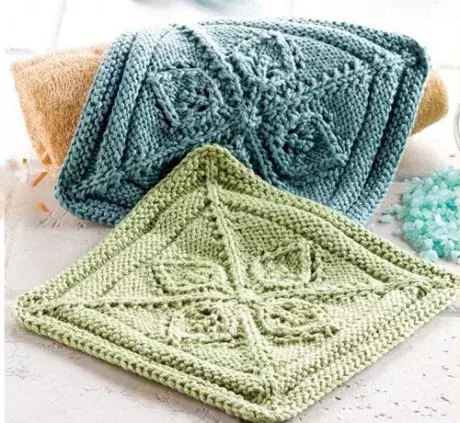
The color of the yarn can be completely different.
Potholders with shadow patterns
Such a pattern is created by the transition of the front surface to the purl and back. (29-31)
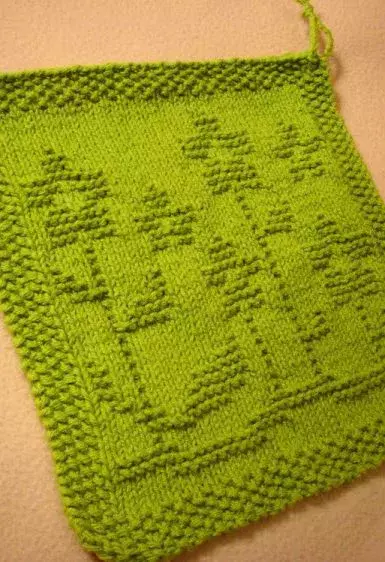
This tack is very easy to knit according to the scheme.
Technique "enterlac"
This knitting method will allow you to create a product that looks like patchwork.
1 row - knit with the wrong side of 21 loops.
2nd - every two loops we turn knitting, alternating purl and front loops.
3rd - in each inner row, add one loop until we get the first triangle.
The product will consist of such triangles.
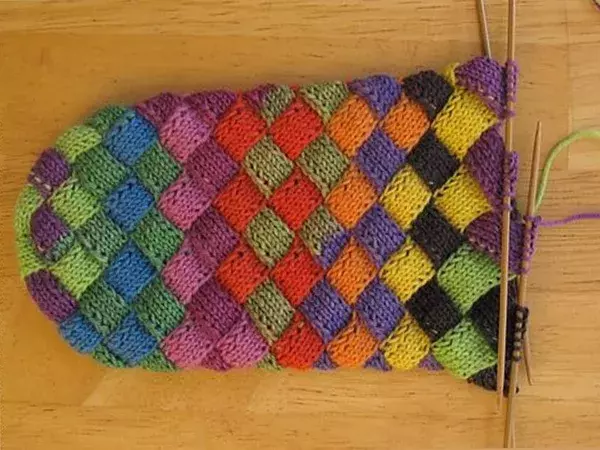
Simply amazing potholders for the kitchen are obtained if you knit them using the enterlac technique.
Conclusion
Crocheting or knitting can be an enjoyable way to show your creativity, and finished products can fill your home with warmth and comfort. But it is far from always that store products can help in the implementation of ideas, therefore, it is better to start implementing copyright ideas on your own. In addition, a hand-made thing always brings more joy, and over time it also gains value. Making a potholder does not take much time and does not require much effort. One has only to show imagination and experiment with the colors of the used yarn, and an irreplaceable and incredibly beautiful thing turns out to be in the kitchen.
VIDEO: Crocheted potholder - master class.
50 options for beautiful knitted potholders:
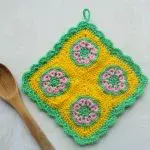
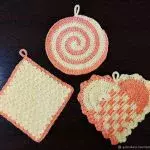

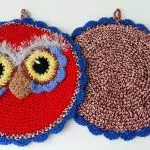
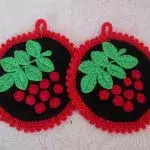
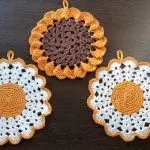
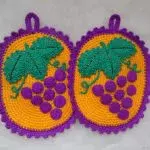
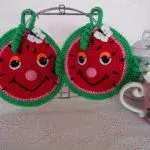
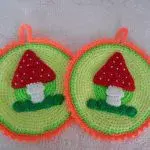
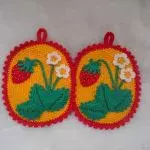
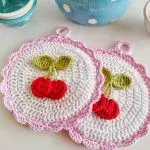
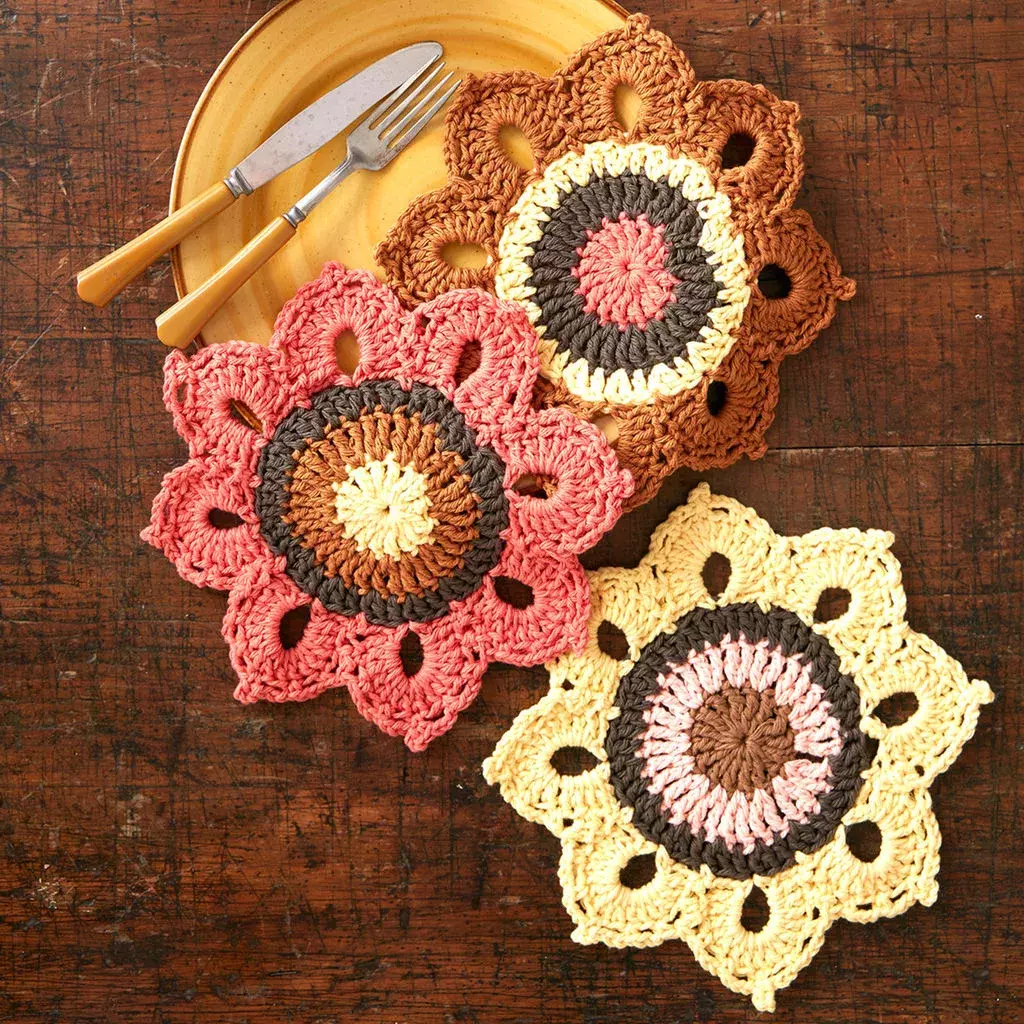
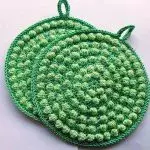
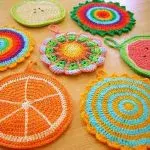
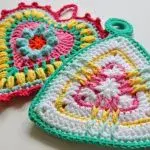
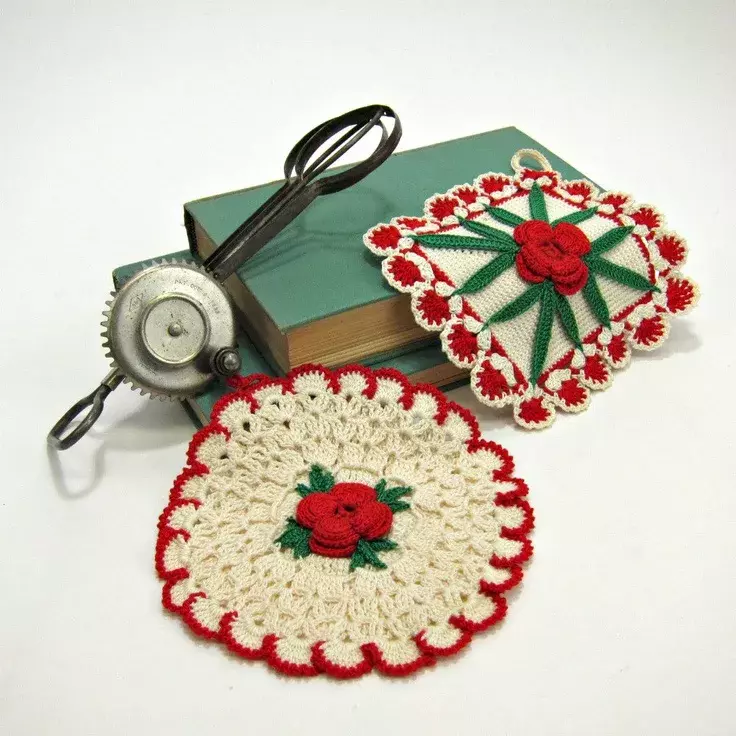
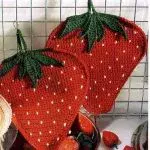
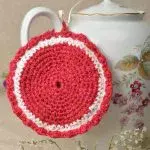
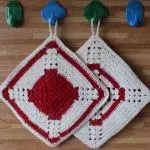
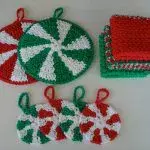
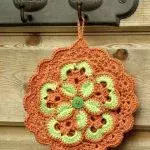
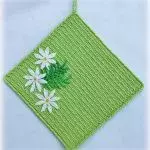
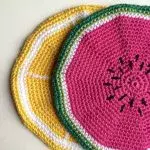
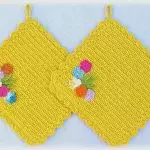

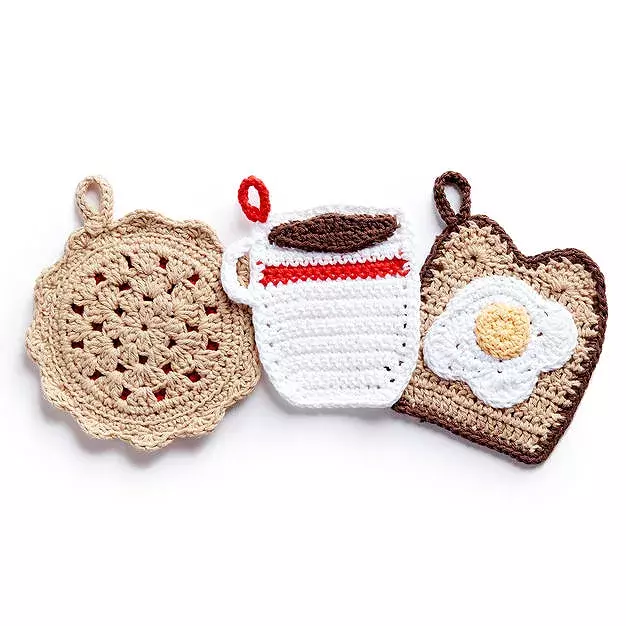
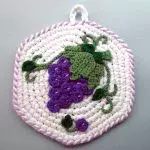
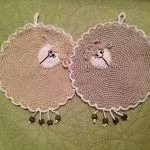
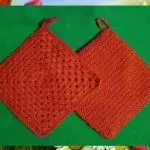

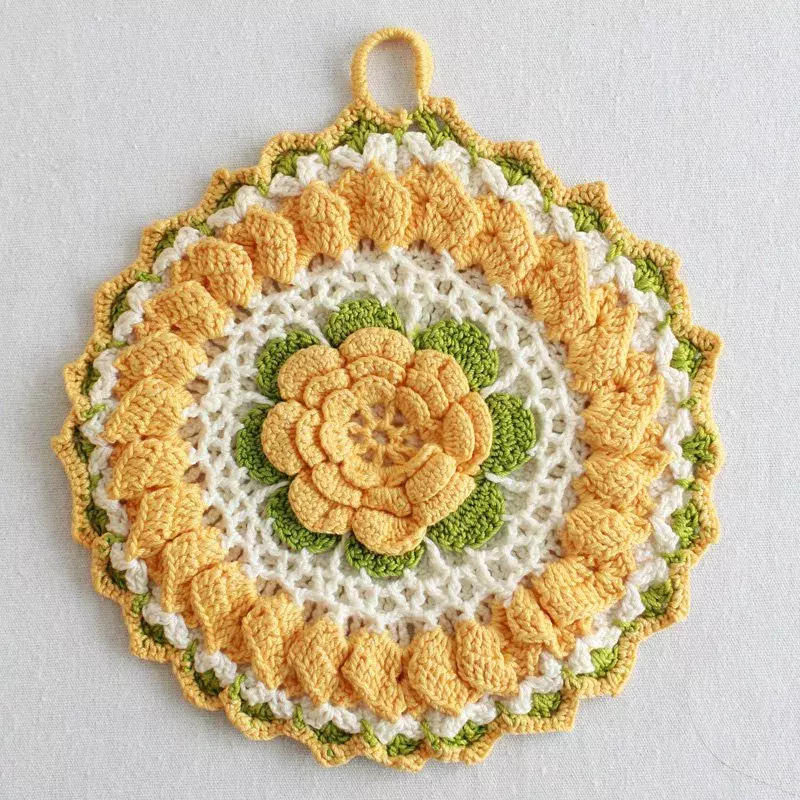
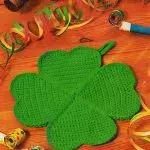
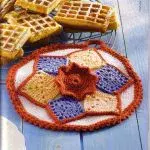
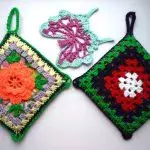
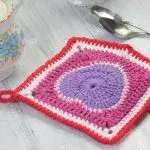
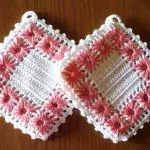
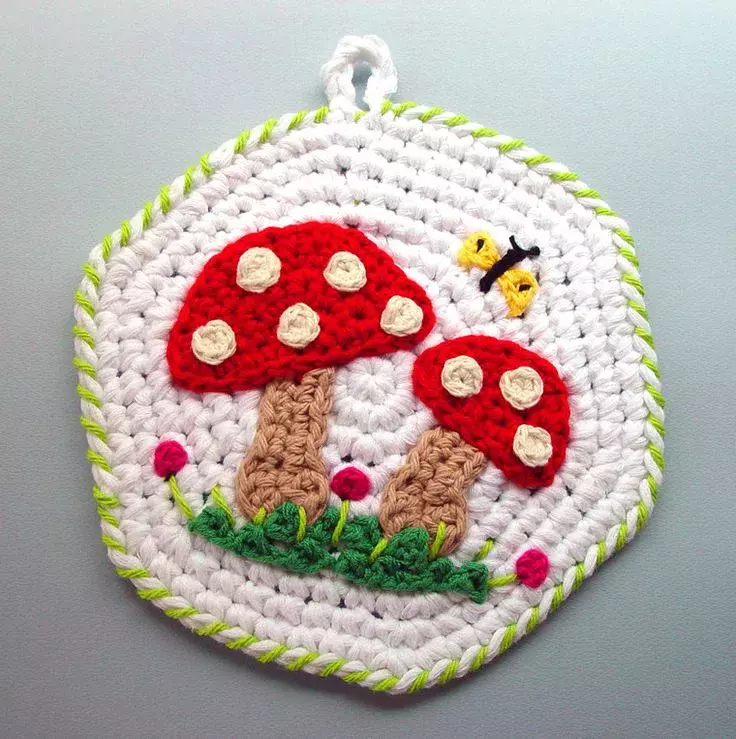
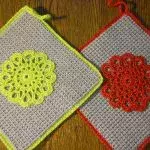
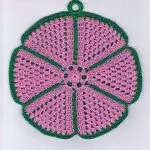
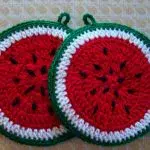
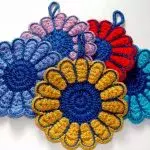
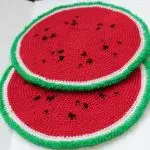
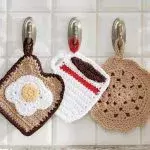
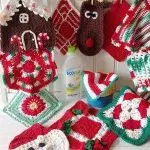


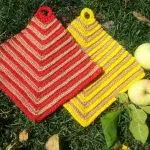
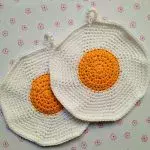
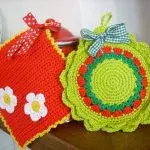
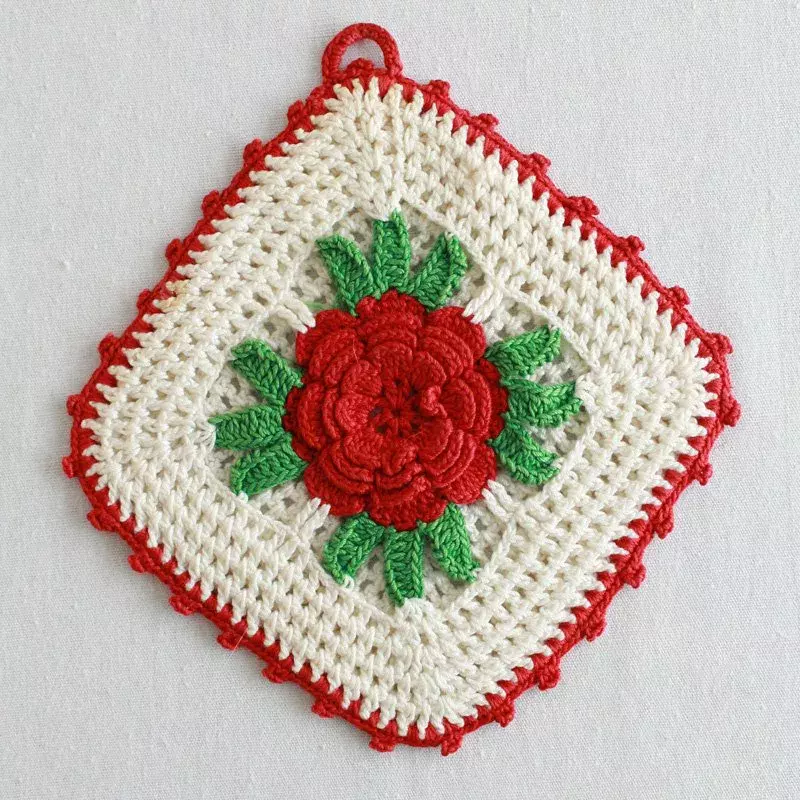
TextileHow to choose a modern carpet for your floor?
NextTextileHow to choose a tablecloth for a festive table or for every day?

